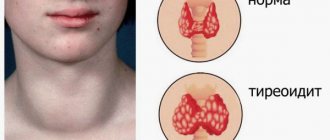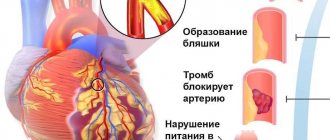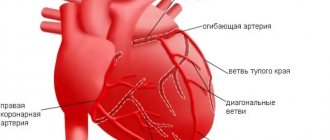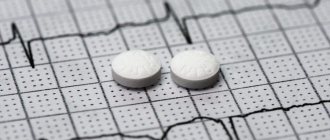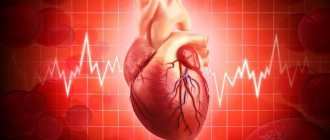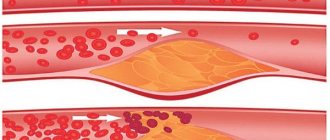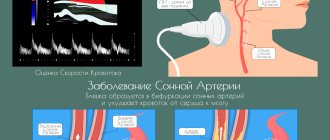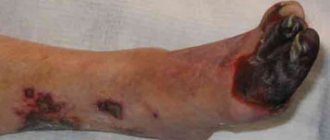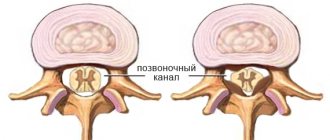Modern cardiology in IMMA medical clinics provides consultations, diagnosis and treatment of atherosclerosis of the coronary vessels. Leading specialists in the region will provide consultations in comfortable conditions, carry out diagnostic measures and, if necessary, prescribe treatment for cardiac pathology. The clinic performs all studies of the coronary vessels and heart using traditional and proprietary techniques. Every client of the clinic can be sure that his health is in the hands of the best doctors.
In our clinics you can:
- Get a consultation with a cardiologist;
- Take an ECG and get a professional interpretation of the results;
- Complete the ABPM procedure;
- Undergo Holter monitoring;
- And use other services.
For more details and any questions, please contact the number listed on the website
What is atherosclerosis
Atherosclerosis of the coronary vessels is a chronic heart disease that occurs against the background of metabolic processes, in particular lipid (fat) metabolism. As a result, cholesterol plaques are deposited on the inner walls of the myocardial arteries, in which defective connective tissue gradually grows (sclerosis). Compaction of the walls of blood vessels leads to irreversible deformations, narrowing of the lumen, up to complete blockage.
Atherosclerosis of the heart vessels is the first symptom of IHD. Without timely and proper treatment, the development of coronary artery disease is inevitable.
As a rule, before the first clinical signs appear, the disease has been developing asymptomatically for a long time. According to medical statistics, atherosclerosis begins at a fairly young age and clearly manifests itself by the age of 45-50. This is due to the cumulative nature of cholesterol. For many years, it can gradually envelop the walls of blood vessels until it reaches a critical level. The accumulation of trans fats interferes with proper blood flow, up to complete blockage of circulation. Asphyxia and atrophy of the heart muscle occurs.
Causes
Atherosclerosis of the heart arteries develops under the influence of both social and physiological factors. In cardiology, there are more than 200 reasons that provoke the progression of pathology. The most common are:
- Lipid metabolism disorders, as a result of which excess cholesterol accumulates in the body, settling on the walls of blood vessels;
- Smoking has an extremely negative effect on the cardiac system. Nicotine and heavy tars damage cell membranes in blood vessels. Permeability is impaired, blood circulation worsens;
- Hypertonic disease. High blood pressure increases the load on the heart muscle;
- Static lifestyle. Office work, lack of normal activity leads to a slowdown in metabolic processes, stagnant processes begin to develop;
- Unbalanced diet. Eating large amounts of fried, fatty foods leads to pathologies of the circulatory system;
- Genetic predisposition. If at least one close blood relative has been diagnosed with atherosclerosis of the heart vessels, then the risk of developing the disease increases several times;
- Floor. In young and middle-aged women, the development of atherosclerosis is prevented by natural processes in the body - the synthesis of estrogens. After menopause, the risk of pathology increases;
- Elderly age. The gradual accumulation of harmful fats occurs over decades. Therefore, the older a person becomes, the greater the likelihood of a dangerous diagnosis;
- Drug addiction diseases. The presence of alcohol or drug addiction aggravates a person’s general health; one of the complications of addiction can be atherosclerosis of the coronary arteries of the heart;
Diabetes. The clinical picture of the disease includes multiple lesions of blood vessels, against the background of impaired metabolism. Atherosclerosis can be a complication.
Cholesterol-lowering drugs
Statins are a group of drugs designed to reduce cholesterol levels in the blood. The action of statins is based on blocking the formation of cholesterol in the liver, which reduces its level in the blood, since all the cholesterol in the body is produced there, and does not come from food. The cholesterol that we eat is only material for the synthesis of our own.
- Rosuvastatin – Crestor (Rosucard, Rozulip, Tevastor)
Prescribed to patients at high risk of stroke and heart attack. Taking Rosuvastatin depends on the level of lipids in the blood and is in a standard dosage of 5 to 10 mg per day.
- Atorvastatin – Liprimar (Tulip, Torvacard, Atoris)
Atorvastatin is a very effective drug with minimal side effects. Suitable for long-term use.
Symptoms
The danger of atherosclerosis of the coronary vessels of the heart lies in the absence of symptoms in the first stages of development. The disease can “silently” destroy arteries over many years. As a rule, the first signs appear in middle age, after 45 years. During this time, negative processes in the vessels reach a critical level and are manifested by the following symptoms:
- Pain in the heart area, left shoulder and under the shoulder blade;
- Discomfort, burning sensation under the ribs;
- Shortness of breath while walking and in a completely horizontal position;
- General weakness, dizziness;
- Constant slight nausea.
Nonspecific symptoms of cardiac atherosclerosis are often mistaken by patients for the manifestation of other diseases that have similar symptoms. This makes it difficult to make a diagnosis in the early stages, when the prognosis for treatment is favorable in the vast majority of cases.
Progressive atherosclerosis of the heart vessels is manifested by more serious symptoms:
- Angina pectoris. Short-term attacks of pain in the heart area, radiating to the shoulder blade, arm, abdominal cavity and lower jaw. Occur after physical activity, eating spicy food or emotional stress. They last no more than 15-20 minutes, the symptoms disappear after resting or taking sedatives, for example, validol.
- Cardiosclerosis. The process of development of atherosclerosis is in the active stage - scarring and replacement of muscle tissue with inferior compounds occurs. It manifests itself as constant mild to moderate pain, swelling of the extremities, shortness of breath, fatigue, and decreased physical activity.
- Arrhythmia. The frequency and sequence of heartbeats is disrupted. The patient experiences paroxysmal pain, a feeling of cardiac arrest, dizziness, fainting, and abnormal tremors in the chest area.
Heart failure. The rupture of a cholesterol plaque is accompanied by the formation of a blood clot, which clogs the artery. The blood stops carrying oxygen and nutrients. The heart stops working normally. Severe, burning pain in the chest, nausea appear, the patient feels short of air, limbs swell, and clouding of consciousness appears.
Important! With acute failure, the risk of developing myocardial infarction increases to 90%. If an attack is accompanied by a rupture of an aneurysm, death occurs.
Depending on how quickly the patient seeks medical help, the prognosis of atherosclerosis will be positive or unfavorable. If the pathology is advanced to such an extent that foci of necrosis begin to form in the myocardium, then a significant threat to life arises.
How to recognize myocardial infarction?
Heaviness, burning, pressure, tearing pain behind the sternum are the most common symptoms of myocardial infarction. The pain often radiates to the neck, lower jaw, and left arm. Many patients report a feeling of lack of air and fear of death. It is very important to call an ambulance at the first symptoms. In large cities of Russia, a special network of hospitals has been created, on duty around the clock to treat patients with myocardial infarction. Unfortunately, the main reason for the poor results of this treatment is the late presentation of the patient.
Treatment
Treatment of atherosclerosis of the coronary vessels of the heart requires a heterogeneous, complex approach and a long period of time. After accurately compiling the clinical picture of the disease, medications and therapeutic measures are prescribed, which include:
- Hypolydemic drugs for removing excess lipids and fluid from body tissues from blood vessel cells;
- Beta blockers, inhibitors to reduce the heart's oxygen demand. During treatment, this reduces myocardial activity and the severity of symptoms.
- Anticoagulants to eliminate the possibility of blood clots.
- Prescribing a special diet;
- Prohibition of smoking and alcoholic beverages;
- Moderate therapeutic physical activity to prevent stagnation;
- Weight loss to normalize metabolic processes and remove toxic substances from the body.
Surgical intervention
Treatment of atherosclerosis involves surgical methods when the disease is in its final stages and the patient’s life is in danger. The method of solving the problem is determined by the cardiologist if conservative therapy does not bring results. Modern medicine offers the following types of surgical interventions:
- Coronary bypass surgery. Prostheses are inserted into the vessels to restore blood circulation to the proper volume.
- Angioplasty. Mechanical expansion of the coronary vessels by inserting special catheters with a balloon. When the balloon is inflated, the cholesterol plaque is “flattened” and, accordingly, the capacity of the vessel is restored.
- Stenting. A rigid frame is inserted into the cavity of the vessel, which expands and fixes the lumen of the artery.
Preventive examination and early diagnosis will help to avoid dangerous surgical intervention. The initial stages of the disease respond well to treatment and prevention of dangerous complications.
Bibliography
When compiling this article, we deliberately simplify some of the material so that it is understandable for non-specialists. If you are a doctor, we will be happy to answer your questions. Write or call us to discuss details. To prepare this material, the following publications were used:
- Girard JP, Moussion C., Forster R. HEVs, lymphatics and homeostatic immune cell trafficking in lymph nodes. Nat. Rev. Immunol. 2012;12:762–773. doi: 10.1038/nri3298.
- Randolph GJ, Miller NE Lymphatic transport of high-density lipoproteins and chylomicrons. J. Clin. Investig. 2014;124:929–935. doi:10.1172/JCI71610.
- Aspelund A., Robciuc MR, Karaman S., Makinen T., Alitalo K. Lymphatic System in Cardiovascular Medicine. Circ. Res. 2016;118:515–530. doi: 10.1161/CIRCRESAHA.115.306544.
- Alitalo K., Tammela T., Petrova TV Lymphangiogenesis in development and human disease. Nature. 2005;438:946–953. doi: 10.1038/nature04480.
- Moore KJ, Sheedy FJ, Fisher EA Macrophages in atherosclerosis: A dynamic balance. Nat. Rev. Immunol. 2013;13:709–721. doi: 10.1038/nri3520.
- Rademakers T., van der Vorst EP, Daissormont IT, Otten JJ, Theodorou K., Theelen TL, Gijbels M., Anisimov A., Nurmi H., Lindeman JH, et al. Adventitial lymphatic capillary expansion impacts on plaque T cell accumulation in atherosclerosis. Sci. Rep. 2017;7:45263. doi: 10.1038/srep45263.
- Milasan A., Ledoux J., Martel C. Lymphatic network in atherosclerosis: The underestimated pathway. Future Sci. O.A. 2015;1:FSO61. doi: 10.4155/fso.15.61.
- Camare C., Pucelle M., Negre-Salvayre A., Salvayre R. Angiogenesis in the atherosclerotic plaque. Redox. Biol. 2017;12:18–34. doi: 10.1016/j.redox.2017.01.007.
- Randolph GJ Mechanisms that regulate macrophage burden in atherosclerosis. Circ. Res. 2014;114:1757–1771. doi: 10.1161/CIRCRESAHA.114.301174
- Johnson RA Lymphatics of blood vessels. Lymphology. 1969;2:44–56.
- Drozdz K., Janczak D., Dziegiel P., Podhorska M., Patrzalek D., Ziolkowski P., Andrzejak R., Szuba A. Adventitial lymphatics of internal carotid artery in healthy and atherosclerotic vessels. Folia Histochem. Cytobiol. 2008;46:433–436. doi: 10.2478/v10042-008-0083-7.
- Kutkut I., Meens MJ, McKee TA, Bochaton-Piallat ML, Kwak BR Lymphatic vessels: An emerging actor in atherosclerotic plaque development. Eur. J. Clin Investig. 2015;45:100–108. doi: 10.1111/eci.12372
- Xu X., Lin H., Lv H., Zhang M., Zhang Y. Adventitial lymphatic vessels—An important role in atherosclerosis. Med. Hypotheses. 2007;69:1238–1241. doi: 10.1016/j.mehy.2007.04.007.
- Martel C., Randolph GJ Atherosclerosis and transit of HDL through the lymphatic vasculature. Curr. Atheroscler. Rep. 2013;15:354. doi:10.1007/s11883-013-0354-4.
- Huang LH, Elvington A., Randolph GJ The role of the lymphatic system in cholesterol transport. Front. Pharmacol. 2015;6:182. doi: 10.3389/fphar.2015.00182.
- Csányi G, Singla B. Arterial Lymphatics in Atherosclerosis: Old Questions, New Insights, and Remaining Challenges. J Clin Med. 2019;8(4):495. Published 2021 Apr 11. doi:10.3390/jcm8040495
- Levin Yu.M. Fundamentals of therapeutic lymphology. - M.: Medicine, 1986. - 288 p., ill.
Possible complications
Atherosclerosis of the aorta of the heart has two types of complications - chronic and acute. Chronic forms include vascular insufficiency, irreversible deformations of the myocardial muscles, proliferation of defective connective tissue, and oxygen starvation of the heart. The most common pathologies that appear are: Myocardial infarction – necrotic scarring of muscle tissue associated with lack of oxygen.
- Stroke is a myocardial disorder that leads to the death of nerve cells in the brain due to mild or extensive hemorrhage;
- Hypertension is a persistent increase in blood pressure caused by impaired blood circulation in the coronary vessels of the heart;
- Coronary heart disease is a pathology with absolute or partial damage to the myocardium.
Acute complications pose a direct threat to life and are associated with the formation of blood clots and spasms in the blood vessels. These include:
- Aortic hematoma is an accumulation of blood between the walls of blood vessels. Manifested by fainting and severe chest pain. Requires immediate surgery.
An aneurysm is an expansion of the vascular cavity caused by abnormal proliferation of connective tissue. A distinctive feature is a sudden rupture with large blood loss, occurring asymptomatically. In most cases it ends in death.
Important! Already at the first consultation with a cardiologist, you can find out about the presence of atherosclerosis of the coronary vessels. Visual inspection and listening are simple and, most importantly, timely diagnostic methods that will help preserve health and life.
Who is at risk
Every person, regardless of gender and age, can develop atherosclerosis of the coronary arteries. This is facilitated by many factors, ranging from social reasons to poor ecology. Guidelines for assessing risk factors for the development of cardiovascular diseases, developed on the basis of many years of research in the field of cardiology, highlight the following indicators:
- Men aged 50-55 years;
- Difficult working conditions due to professional activities;
- Hereditary heart pathologies;
- Obesity;
- Smoking, including passive smoking;
- Psychological disorders – stress, depression, depression;
- Thyroid diseases;
- Poor nutrition, the definition includes fried, fatty, sweet and flour foods, fast food.
A systemic risk assessment for the next 10 years can be made independently using the well-known SCORE (Systemic COronary Risk Evaluation) scale proposed by American cardiologists. The modern pace and rules of life put every second person at risk. Therefore, it is difficult to find a better prevention of atherosclerosis of the heart vessels than regular preventive examinations. At the slightest suspicion, it is better to consult a cardiologist and adjust your lifestyle than to undergo long-term treatment, which does not always have a positive outcome.
Basic diagnostic methods:
- Clinical method
- more than half of the information about atherosclerotic lesions comes from a thorough initial examination of the patient, collection of complaints and anamnesis of the disease. - Electrocardiography (ECG)
- shows changes in the heart muscle and heart function caused by atherosclerosis. - Daily monitoring of the electrocardiogram according to Holter
is a widespread method of functional diagnostics, which is used to detect heart rhythm disturbances and ischemic (atherosclerotic) changes in the heart muscle. - Bicycle ergometry
- evaluates the functioning of the respiratory and cardiovascular systems during physical activity, and, in the presence of pathology, is able to identify insufficient function of organs affected by atherosclerosis - Echocardiography
- using ultrasound waves, the work of all parts of the heart is assessed in real time. - Duplex scanning of arteries
is a visual diagnostic method that allows you to “see” the degree of narrowing of the vascular bed, assess the size and structure of the atherosclerotic plaque, its integrity and measure the speed of impaired blood flow in the affected artery. - Magnetic resonance imaging angiography
(MRI angiography) is one of the newest methods for diagnosing vascular diseases. It is possible to obtain images of the vessels of the head and neck without the introduction of any contrast agents. The absence of radiation exposure makes this study absolutely safe for humans. - Multislice computed tomography angiography
allows screening patients for surgical treatment on an outpatient basis due to the non-invasiveness of the method, effectively solving complex diagnostic problems based on the data obtained on the topography of anatomical areas in three-dimensional reconstruction mode, and visualizing any vessels of the human body more than 2 mm in diameter. - Angiography
is the diagnosis of atherosclerotic lesions of almost any arterial system, with visualization of the degree of stenosis, the relationship of the arteries with the surrounding anatomical structures, and possible individual variations in the structure of the arterial bed. The method is considered invasive (requiring surgical intervention), and is prescribed according to strict indications, when the question of possible surgery arises.
